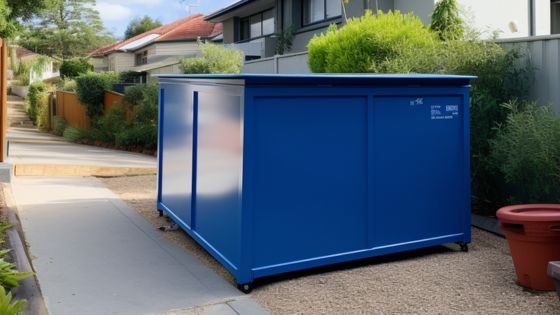
Restoring a property following damage can be a stress-inducing experience, compounded by the aftermath of an unfortunate event such as a flood, fire, or mold outbreak. The intersection between emotional upheaval and the practical responsibilities of restoration can lead to serious mistakes. Many property owners may not know all the steps necessary to effectively restore their property and may inadvertently complicate the process. This article will delve into common missteps that prolong the restoration process and lead to increased expenses and potentially damage to the property. By understanding these pitfalls, homeowners and property managers can better prepare for and navigate their restoration journey.
Underestimating the Extent of Damage
One of the most widespread errors made during property damage restoration is underestimating the extent of the damage. After a significant incident like flooding or a fire, it can be hard for property owners to assess just how deeply a structure has been affected. Often, visible damage, such as peeling paint or soaking carpets, is just the tip of the iceberg. Structural elements may be compromised.
A small leak might suggest minor water damage. Moisture can seep into walls and insulation, leading to hidden mold growth and even weakening foundational elements. Homeowners are sometimes reluctant to involve a professional early on, assuming that they can handle it themselves. According to the Institute of Inspection, Cleaning and Restoration Certification (IICRC), engaging skilled restoration services can save time and prevent more costly repairs down the line. Not anticipating the full scope of damage can easily lead to complications, including delays and higher restoration costs later on.
After a severe basement flood, we contacted a water mitigation company to remove the excess moisture, prevent mold growth, and restore our home to its original condition.
Ignoring Safety Protocols
Neglecting safety protocols is another grave mistake. When dealing with property damage from floods or fire, hazardous materials such as waterborne pathogens, residual chemicals, or structural instabilities can pose serious risks to health and safety. It’s vital to treat the restoration process with the utmost care to avoid injuries or health risks that can arise from improper handling or a lack of protective equipment.

Many property owners may overlook the need for a property damage restoration company that implements safety measures. A reputable service provider will use the necessary personal protective equipment (PPE) and follow strict safety protocols to protect both their team and the property owner. Risking personal safety can lead to severe consequences, making it imperative to prioritize following established safety procedures during the restoration process. Restoration professionals often have the training and expertise to navigate these challenges safely.
Delaying the Restoration Process
Time is of the essence when it comes to property damage restoration. Delaying the restoration process can turn a manageable cleanup into a more complex situation. Water damage can escalate to mold infestation within 24 to 48 hours, making it essential to contact a water damage restoration service before the problem worsens.
Insurance policies often include requirements or recommendations for immediate action post-incident. Failing to act promptly can lead to complications with coverage and claims, potentially leaving property owners responsible for greater losses than they anticipated. Engaging with experts like advanced flood restoration services quickly after an incident can mitigate the impact and streamline the recovery process. Delays hinder recovery and can result in more costly repairs and restoration efforts down the line.
Overlooking Documentation and Inventory
Another area where property owners commonly falter is in documenting the damage. Failing to keep accurate records can lead to disputes with insurance companies and complicate the claims process. It is paramount to take photographs and create a detailed inventory of damaged items immediately after the event, before any restoration efforts begin. Maintaining a clear record helps ensure that claims filed are accurate and authentic, leading to smoother processing with insurers.
Property owners should keep records of all communications with restoration companies and insurance representatives. Documentation is vital for claims and serves as a reference during the restoration process, ensuring that no critical steps are brushed aside. Ensuring thorough documentation dramatically increases the chances of receiving the financial support warranted to cover damages.
Choosing the Wrong Restoration Company

Selecting a restoration company is a crucial decision that can profoundly affect the outcome of the repair and remediation processes. Many property owners opt for the first service they find or base their decision solely on cost, which can lead to disastrous results. For emergency response and thorough drying, choose a reputable water mitigation company (if the damage has been caused due to water) that offers 24/7 rapid response, coordinates with insurance carriers, and follows industry best practices. It’s good to research companies thoroughly, seeking out those with relevant certifications and positive reviews.
Choosing inadequately trained or unlicensed contractors can hinder the restoration and can jeopardize the integrity of the property, leading to severe consequences in the future. Competent restoration services will use industry-standard practices and high-quality materials to ensure the property is restored safely and effectively. Homeowners should prioritize research and seek referrals from trusted sources, allowing for informed decisions in the selection of restoration services.

Neglecting Post-Restoration Tasks
Once restoration is complete, many may assume that everything is fine and that their property is back to pre-loss condition. Neglecting post-restoration tasks can lead to future complications. Monitoring for any signs of lingering moisture, mold growth, or structural issues is important to ensure the long-term success of the restoration process. Regular inspections can help property owners identify potential problems early, allowing for timely intervention. It’s recommended to establish a maintenance schedule for the restored areas, ensuring that the integrity of the property remains sound. By remaining vigilant after restoration, homeowners can protect their investment and deter future complications, fostering a secure environment.
Navigating property damage restoration requires careful consideration and attention to detail. By being aware of these common mistakes, property owners can take proactive steps toward a successful restoration journey. Engaging with professionals, documenting correctly, and maintaining diligence post-restoration can greatly minimize complications, saving time and money in the long run.
- 3shares
- Facebook0
- Pinterest0
- Twitter3
- Reddit0













